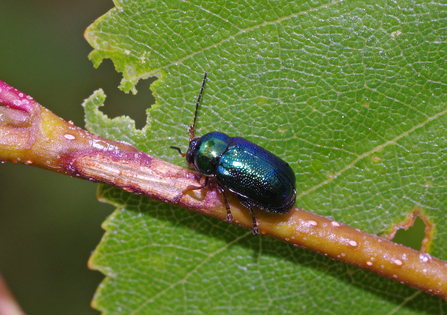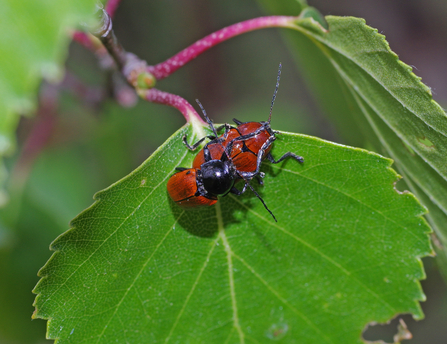Top of the Pots
Mike Waite
The North Downs are a refuge for two of the UK’s rarest leaf beetles, the shining pot beetle, Cryptocephalus nitidulus and the hazel pot beetle, Cryptocephalus coryli. We are working on a project to find them.
As part of our prospectus of research projects in collaboration with local universities, we are working with a student, Stephen, from the University of Sussex to map the distribution of two rare beetles in the North Downs. He wrote the following blog about how his project is going so far. After a successful first outing, we're hoping to find many more beetles across the Downs in the following weeks! If you're interested in the Trust's research and monitoring work, please take a look at our page here

Mike Waite
"The North Downs are a refuge for two of the UK’s rarest leaf beetles, the shining pot beetle, Cryptocephalus nitidulus and the hazel pot beetle, Cryptocephalus coryli. Two SWT staff and a volunteer were out and about on the Downs near Headley Common last week to see if the first adults had emerged for this year’s breeding season. A hazel pot, in vivid orange, had been spotted the previous week – they are the earlier to emerge – but this time both were found, including (with apologies for interrupting) a mating pair of coryli on a birch leaf. The first nitidulus – we think a male, which are a little smaller with longer antennae than the females – shows the fabulous metallic green sheen which typifies this species.
These small but beautiful insects have an unusual life history. To protect her eggs and the larvae that develop, the female encases them in a “pot” made – not to put too fine a point on it – from her own poo! This provides a hardened casing and she then drops the eggs from her perch in a tree or scrub bush onto the ground below. There the larvae hatch and there they remain, foraging in the leaf litter, still in their protective pot, until pupation and emergence of the adult insect late in the following spring.
A survey of several North Downs locations where these brightly coloured beetles are believed to remain is being undertaken this year. This will help the Trust plan its habitat management strategy across its downland reserves and also help inform the work of other Surrey landowners managing landscape for nature, such as the National Trust. The Downs are an isolated outpost for coryli – the main UK population is in Sherwood Forest. Nitidulus has not in recent years definitely been found anywhere other than the Surrey North Downs. It’s up to us to protect their habitat!"

Mike Waite
